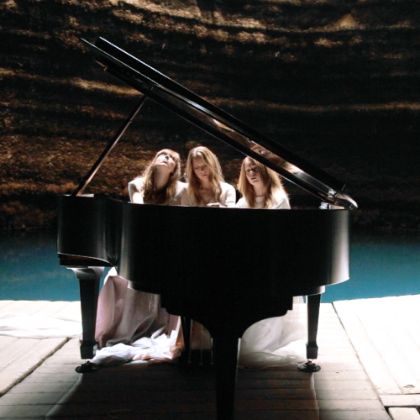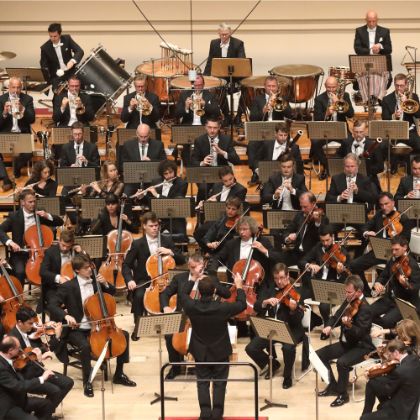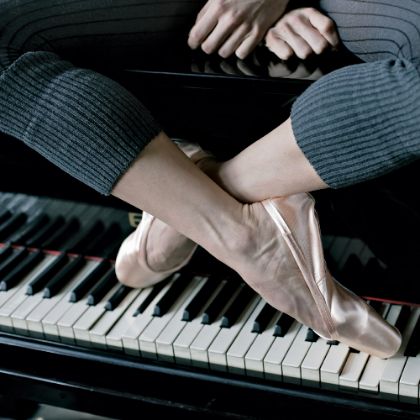Listen Magazine Feature
Work Songs
Jason Moran On Music, Space and Time.
By Ben Finane
“I HAVE OFTEN thought about how music, especially jazz, functions in rooms — and how entertainment can serve as work, especially for African American jazz musicians,” muses pianist Jason Moran. “The relationship of jazz to the work song, songs that slaves once sang, spurred my own exploration of how this music was used in environments that slaves were accustomed to.”
Moran’s contemplation of work songs ultimately led the jazz pianist and MacArthur Fellow to create a multimedia exhibit at this summer’s Venice Biennale titled STAGED. The three-dimensional, freestanding sculptural installation reconstructs architectural elements of the Savoy Ballroom and the Three Deuces, two legendary New York City jazz venues that were home to some of the greatest jazz performances of their day.
Photo: MacArthur Foundation
Installation view of Staged at the Venice Biennale
At the Biennale, the Savoy wall confronts the Three Deuces stage to embody a face-off between two different eras of American jazz:
1930s swing era with 1950s bebop, respectively. Moran explains that the Savoy Ballroom was an enormous space meant for dancing. When swing went out of fashion and jazz groups literally downsized, the stages shrunk, too. Though the musicians were “shoved in a corner,” as Moran puts it, “the music remained rebellious.” Visitors walk between two separate but related musical spaces, while a series of old and new songs play on a Steinway Spirio — Steinway & Sons’ recently released high-resolution player piano. The experience underscores the labor of the musicians who enlivened these original contexts and situations.
“When the Spirio is activated and people gather around the piano, it is a real moment,” says Moran. “It is both otherworldly and ghostly. Music has always been something people have gathered around, similar to food, and Spirio is a pied piper for people walking through the galleries.
“It was difficult at the beginning working with Spirio because I was not accustomed to hearing myself play,” says Moran. “A pianist spends his time behind the keyboard, not listening to him or herself. Rarely can we stand on the other side of a piano and listen to the waves hit us from multiple angles. That took me a long time to get used to over the course of this process and to be able to undergo this sort of reflection — which was wonderful and eye-opening.”
Moran explains that the origin of work songs stretch all the way back to field hollers and the blues, which of course still have repercussions on jazz today. Certain singers on plantations were in fact paid by slave owners to sing to other slaves because it made them work faster, better and more efficiently. “What the music aims for,” says Moran of his installation, “is a realization that the community is a part of the problem — but can also be part of the solution. Sometimes you must point people to the problem because they won’t believe you.”
This article originally appeared in Listen: Life with Music & Culture, an award-winning quarterly print magazine published by Steinway & Sons. Subscribe here.
Film Credits
Jason Moran: STAGED
Director: RoundO Films
Producers: Steinway & Sons, RoundO Films
Executive Producer: Radiclani Clytus
Director of Photography: Gregg Conde
Editor: Anthony Gannon
2nd Unit Director of Photography: Joseph Paul Alvarado
Performance Sound Recordist: Matteo Costa
Colorist: Beth Cohon
Post Audio Engineer: Kyan Taylor
related...
-

Far-Flung Pianos
Distant Steinways tell diverse stories.
By Brian Wise
Read More -

Mystery Maestro
Upon Kirill Petrenko’s Japanese debut, a glimpse behind the scenes
Read More
By Rebecca Schmid -

Playing the Barre
The invisible but indispensable ballet rehearsal pianist.
Read More
By Marcia Adair